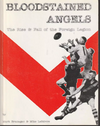North park
Team Captain
- Mar 2, 2015
- 358
- 574
- AFL Club
- Collingwood
South Melbourne's success in the 1930s was primarily due to local businessman Archibald Crofts being club president from 1933 - 1937. Crofts' Wikipedia page explains what happened:The way South Melbourne fell away so fast in the late 1930s was quite strange, I've never been able to explain it although the Swans did rebound in the early-mid 1940s and were back in the finals in the later years of WW2.
Melbourne in the late 40s/early 50s were quite an odd case. Premiers in 1948, 5th in 1949 and back in the finals in 1950, the Demons slipped to last with 1 win in 1951 and were second last in 1953, before rising to runner-up in 1954 and premiers in 1955, this setting off a golden era for the Demons with more premierships in 1956, 1957, 1959, 1960 and 1964, and runner up in 1958.
Oddly enough, I can't find an AFL inverse of the Dees of this era - a bottom team that soared up the ladder to claim a premiership within a few years, but just as quickly fell back to the bottom of the ladder. There are some examples in the state leagues, like in the WAFL South Fremantle were last in 1969, rose to first in 1970 and crushed Perth in the Grand Final, but were last again by 1972 after finishing 6th (of 8 WAFL teams at the time) in 1971. Can you say, 'whiplash?'
More recently there's enigmatic SANFL team West Adelaide which finished 9th (second last) in 2014, raced up the ladder to win the 2015 SANFL premiership (their first since 2015) but were last with just two wins a year later in 2016, and since then the Bloods have been 9th in 2017, 8th in 2018, five consecutive wooden spoons 2019-2023 and 8th with 5 wins and an abysmal percentage after many terrible thrashings yet again in 2024.
Oakleigh were a powerhouse of the VFA in the early 1970s, winning the 1972 Division 1 flag in one of the most dominant seasons seen in this league, and runners up to the powerful Prahran and Port Melbourne teams in 1973 and 1974 respectively. But after a mediocre mid-ladder season in 1975 thought to be an aberration, Oakleigh finished last in 1976 and were relegated to Division 2. One of the strongest teams in the VFA's lower division, Oakleigh should have gotten back to Division 1, but unfortunately the Devils developed a hoodoo for Grand and Preliminary finals, and missed numerous chances to get back to the top league. When Oakleigh finally snapped their GF hoodoo in 1988, crushing Sunshine in that year's Division 2 GF, it was an anticlimax, as Division 2 would be scrapped and all teams back in Division 1 from 1989.
"In late 1931 South Melbourne Football Club official Jack Rohan persuaded Crofts to become club vice-president, as Croft's wealth, stature in the local community and Protestantism would help the club (South Melbourne was primarily a Catholic club).[6] Crofts was elected president in 1933, serving until 1937.[2] As President, Crofts had the financial resources to help attract star Australian rules footballers to South Melbourne, paying them the maximum £3.00 per match allowed under the VFL's Coulter Law and employing many of them in his business.[6] In all, between 1931 and 1934 South Melbourne recruited 11 players, including seven from Western Australia.[7] In response, a journalist jokingly suggested that South Melbourne should be known as "The Swans" (swans being the faunal emblem of Western Australia).[8]"
There has been a book written on South Melbourne's rise and fall during the 1930s (see below).
Oakleigh's success and fall during the 1970s followed a similar pattern. It was able to attract high-profile, high-priced players such as Bob Johnson and Bill Barrot, which led to the 1972 premiership and runners up in 1973 and 1974. However, these players retired or moved on, and the club was unable to continue to offer big money to attract more big names.
So both cases involved short-term success by "buying" premierships, but not setting up long-term success based on a solid foundation.





